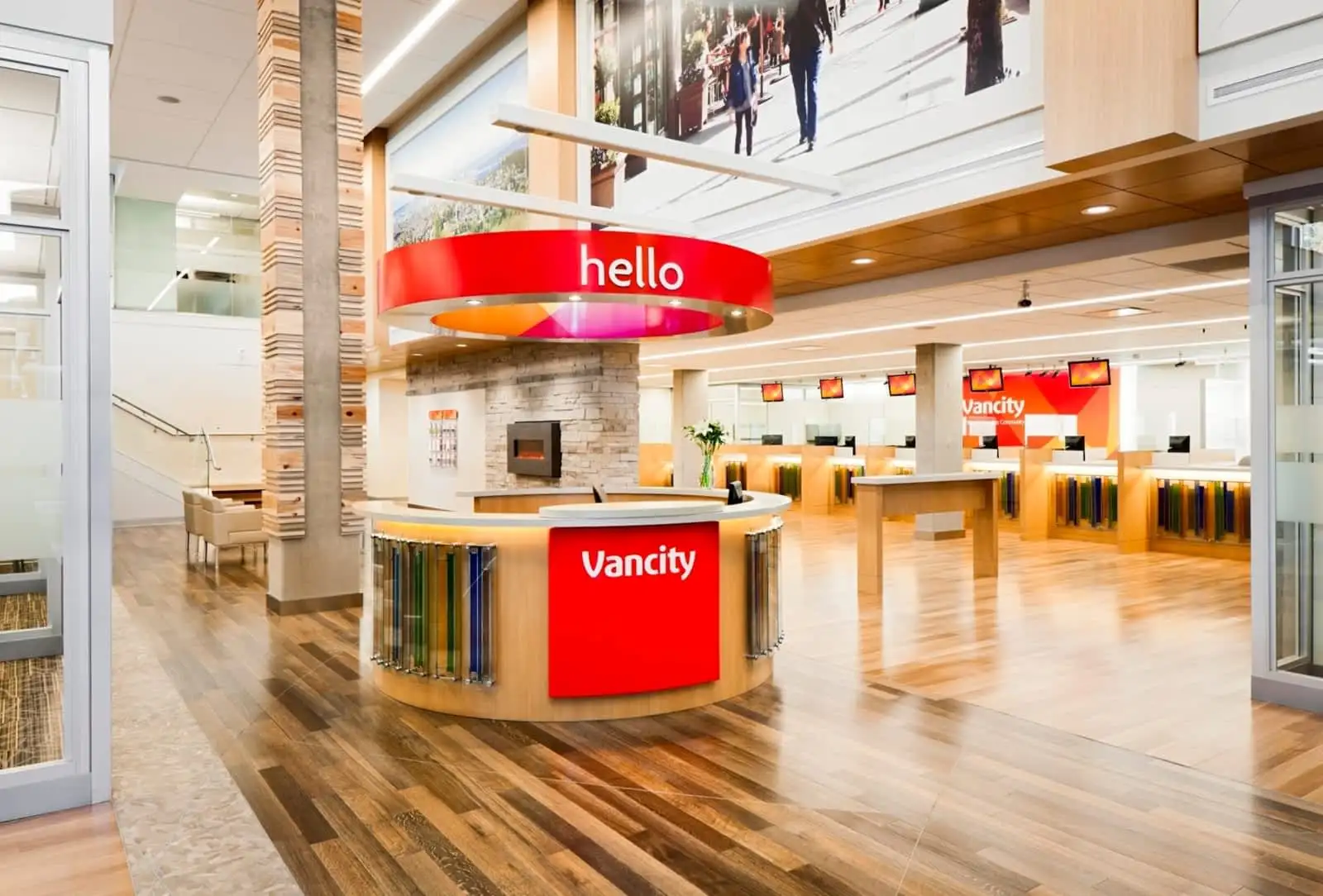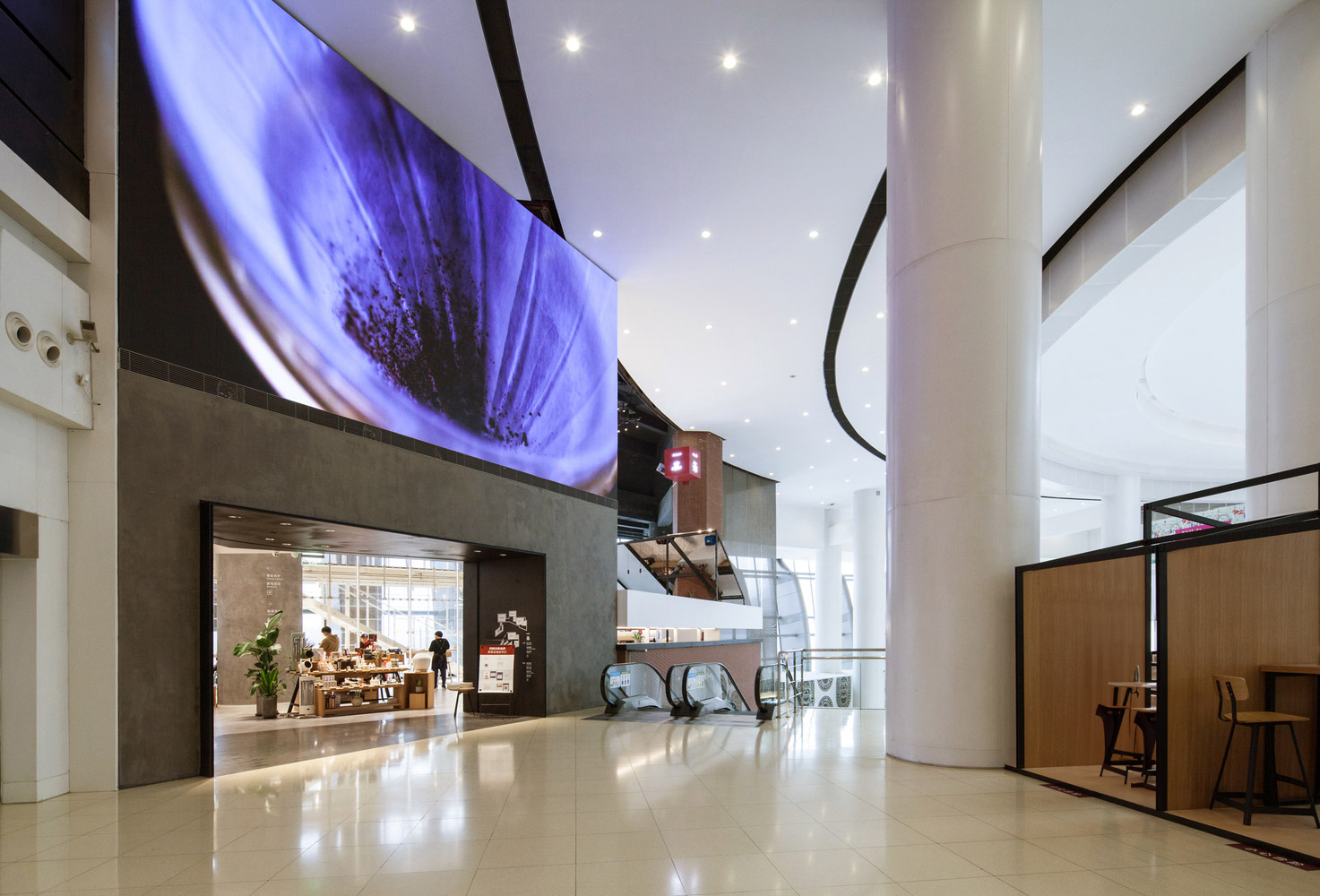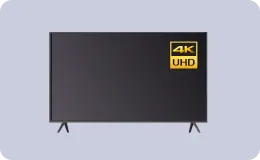Digital Menu Board Software: Your Buying Checklist
WRITTEN BY: TelemetryTV, 03-13-2025
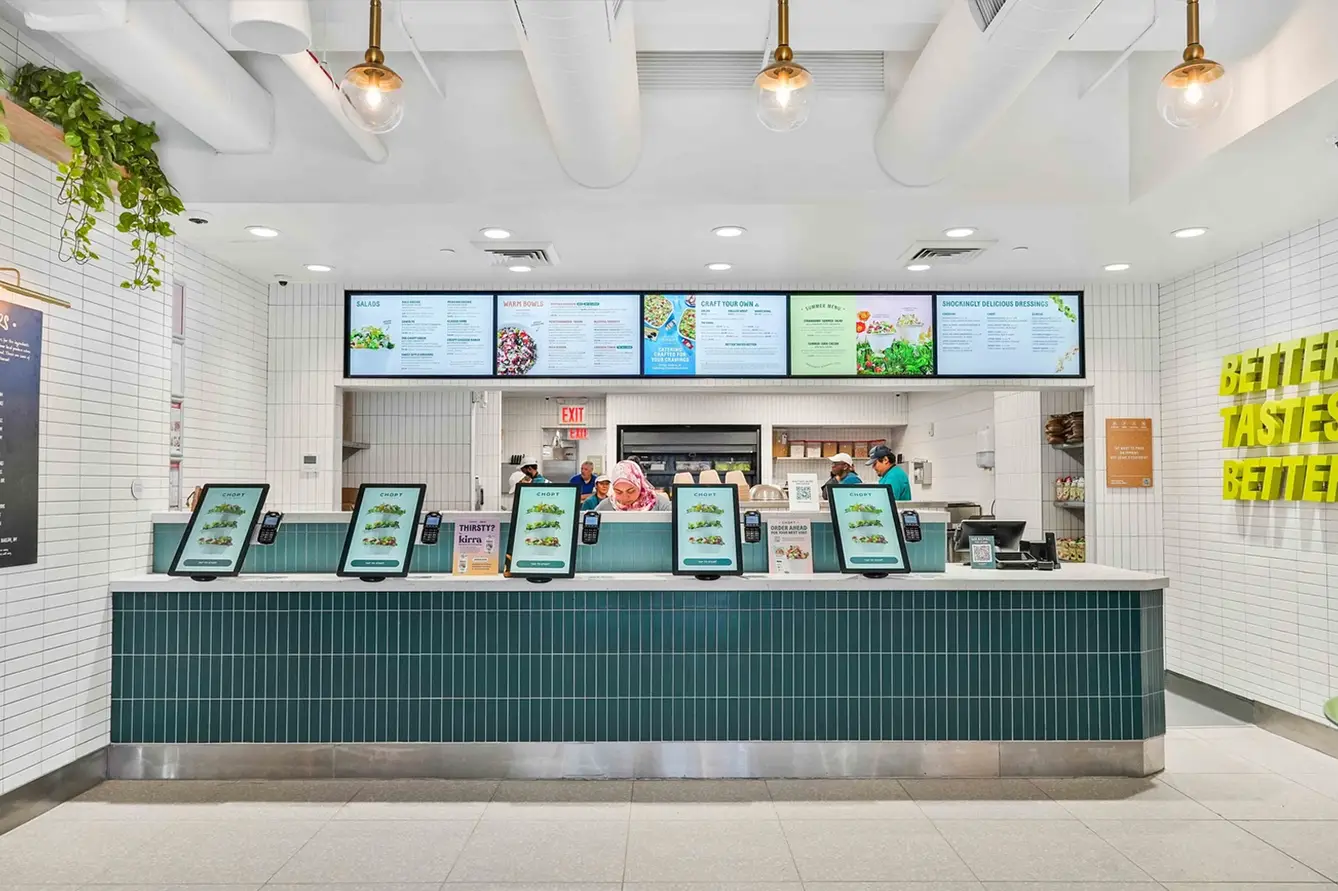
Quick-service and fast-casual restaurants are discovering that digital menu board software is no longer an option—it’s a necessity for staying competitive. Dynamic menu displays do more than replace static signs: they boost sales, speed up updates, and enhance the customer experience.
This article offers a concise buying checklist, focusing on the essential capabilities and considerations for QSRs and fast-casual brands. You will also discover how salad chain Chopt successfully migrated its menu boards to TelemetryTV’s digital signage software and TelemetryOS Box.
Content Management and Scheduling
The heart of any digital menu board solution is a user-friendly content management module. A centralized library should allow you to edit menu items, prices, and visuals from a centralized location, then automatically push changes to all screens.
Scheduling is another must. Most restaurants need varying menus throughout the day, such as breakfast and lunch rotations. Your software should let you schedule content by time or daypart, eliminating manual updates. Tools that support dayparting and conditional triggers take it a step further, enabling location-specific promotions that switch automatically.
Role-based access further refines how content gets distributed. For a multi-store operation, you may allow local managers to update certain specials while corporate retains final approval. The goal is to keep your brand consistent while ensuring menus can evolve swiftly.
POS and Inventory Integration
If your point-of-sale system does not link with your digital menu boards, you risk mismatched prices and inventory headaches. Real-time updates mean that when you run out of an item, the displays can immediately reflect it. Similarly, if you lower a price or launch a promotion in the POS, the boards follow suit across every restaurant.
Analytics becomes more potent when tied to sales data. Tracking uplift from specific items or promotions is key to calculating return on investment. A cohesive digital ecosystem makes quick, data-driven decisions possible.
Multi-Location Management
A single coffee shop can get away with local control, but a multi-site chain needs enterprise-level features.
• Remote monitoring lets you check if all screens are online and playing the correct content.
• Group-based controls ensure that updates roll out smoothly across specific regions or device groupings.
• Permissions and user management are essential. Marketing may handle menu design, store managers might tweak daily specials, and IT can manage device upkeep. Without these boundaries, collaboration becomes messy, and brand standards can erode.
Hardware Compatibility and the TelemetryOS Box
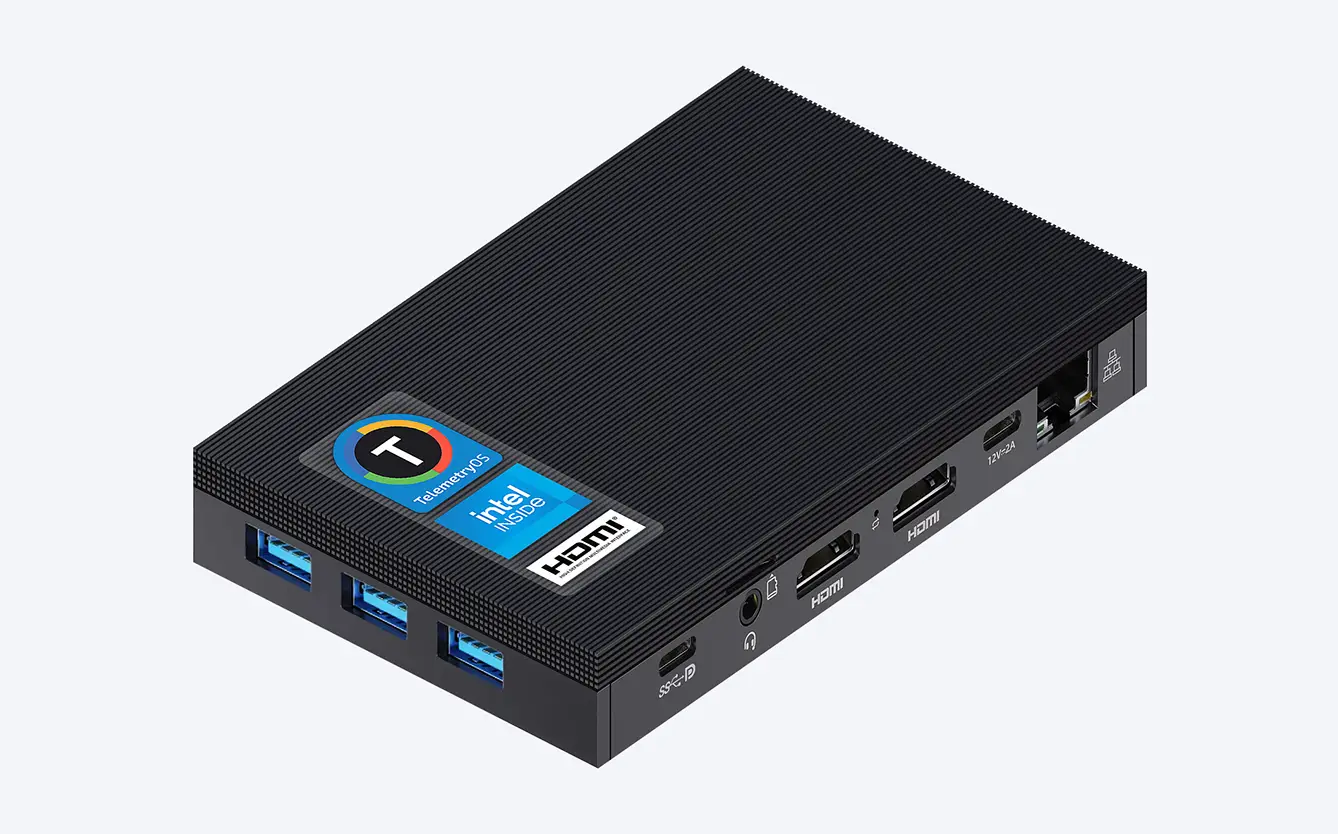
Digital menu board software runs on media players. Some restaurants rely on Windows or Android devices, while others prefer specialized hardware. Whichever route you choose, insist on reliability. Continuous uptime is vital—technical failures during a lunch rush can hurt sales and customer trust.
TelemetryOS Box is a dedicated player purpose-built for 24/7 use. Its Linux-based operating system eliminates extraneous processes, reducing crashes and ensuring stable playback. It can drive multiple high-resolution displays from a single device, potentially lowering your hardware footprint.
Cloud vs. On-Premise
Cloud-based digital signage software dominates the market for good reason. You need only plug in media players and log in to an online dashboard. Vendors handle server maintenance, security patches, and updates, letting your IT team focus on strategic tasks.
An on-premise setup, while less common, grants full control over servers and data. However, this model often demands more IT resources and higher upfront costs, making it a less appealing choice for many QSR operators.
| Factor | Cloud | On-Premise |
|---|---|---|
| Setup | Minimal. Sign up, connect players via internet. | Complex. Install and manage servers in-house. |
| Scalability | Automatic. Add screens without local infrastructure changes. | Limited by your hardware and network capacity. |
| Updates | Frequent, automatically pushed by vendor. | Manual updates, handled by internal IT. |
Security and Reliability
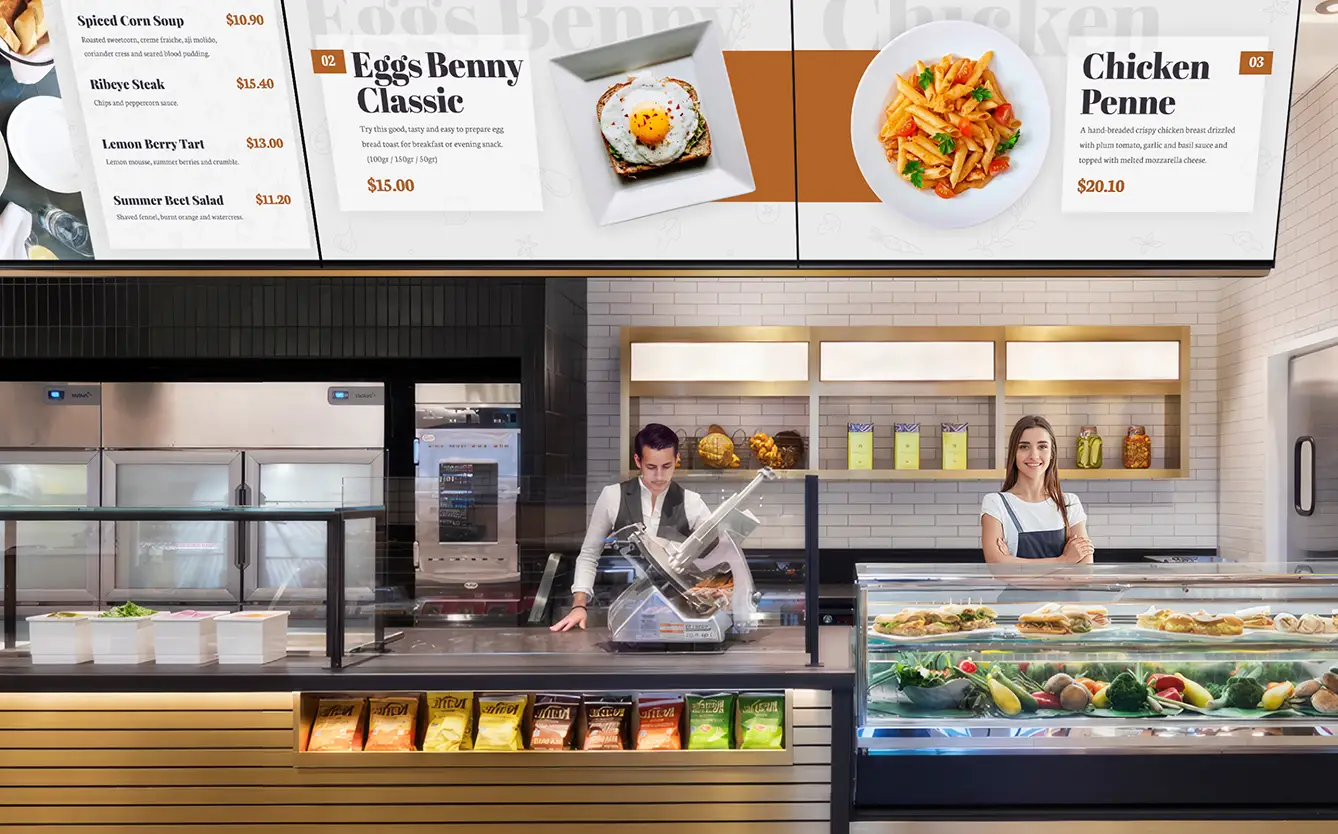
Digital menu boards are an extension of your IT ecosystem. Look for encryption (HTTPS or TLS), access controls, and a hardened operating system. A locked-down media player reduces the risk of malware or unintended software updates interrupting the display. Regular patches and remote device monitoring add extra layers of protection.
Restaurant operators should also consider compliance, such as nutritional labeling requirements. Ensure your software can neatly integrate calorie and allergen data for consistent adherence to local regulations.
Analytics and Performance Tracking
Many restaurants adopt digital menus without fully leveraging analytics to measure their impact. A robust reporting suite can show which promotions drive the most sales, or how certain layouts nudge customer choices.
At minimum, the software should provide proof-of-play reports and content scheduling logs. Advanced platforms integrate with POS data, revealing correlations between displayed content and purchase behavior. This forms the basis for optimizing menu layouts and promotions. A/B testing can then refine menu strategies further.
Design and Customization Tools
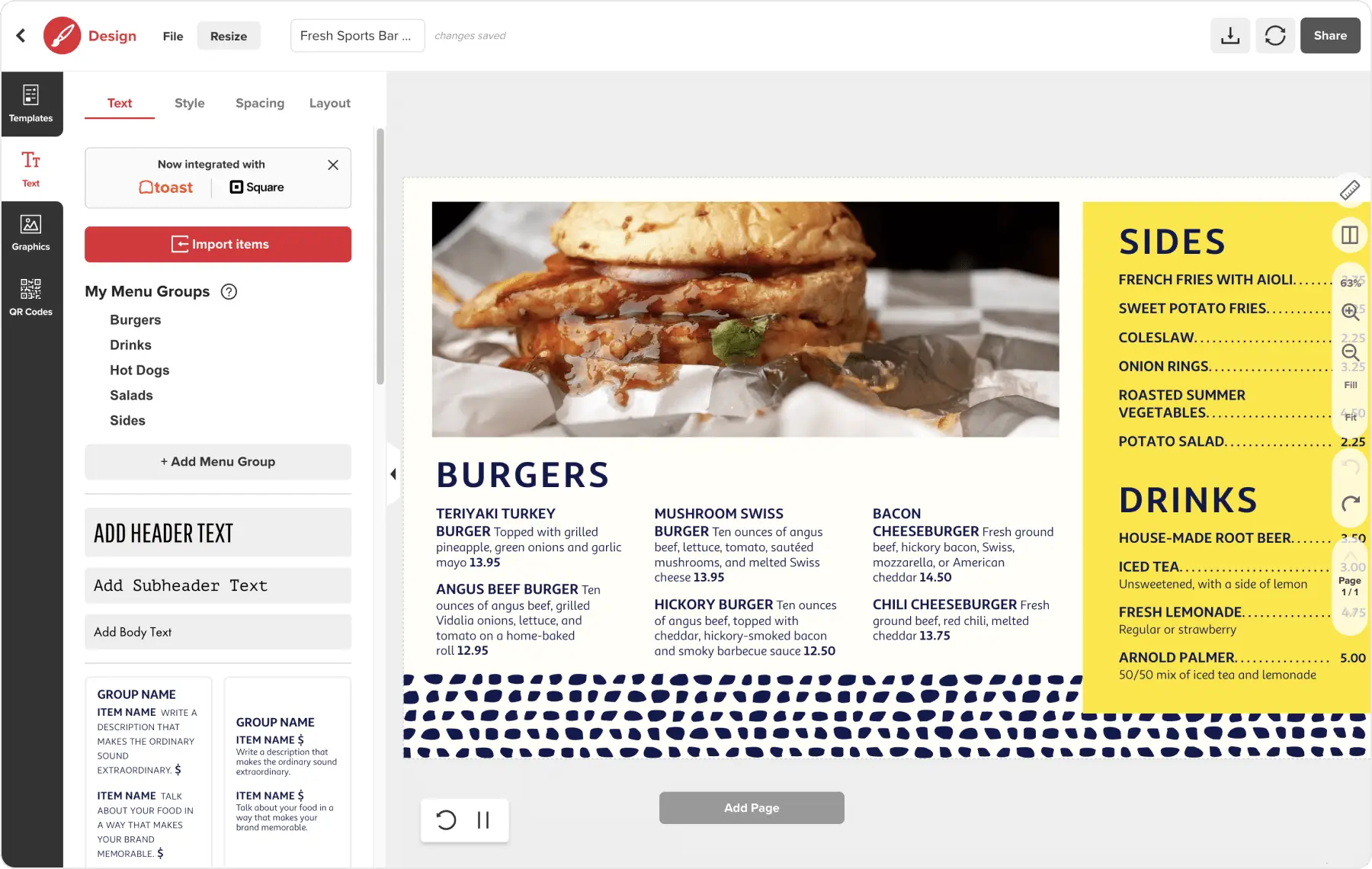
Digital menu boards stand out when they combine vivid imagery, consistent branding, and easy-to-read pricing. Look for templates and drag-and-drop editors that balance creativity with simplicity. Many restaurant operators prefer building content in integrated tools like MustHaveMenus. TelemetryTV’s MustHaveMenus app allows users to pull from a massive template library to design, then publish menu layouts instantly.
Multizone layouts can transform a single screen into multiple displays—such as a promotional video on one side and static pricing on the other. Offline playback ensures the show goes on even if your internet connection falters.
Case Study: Chopt’s Journey
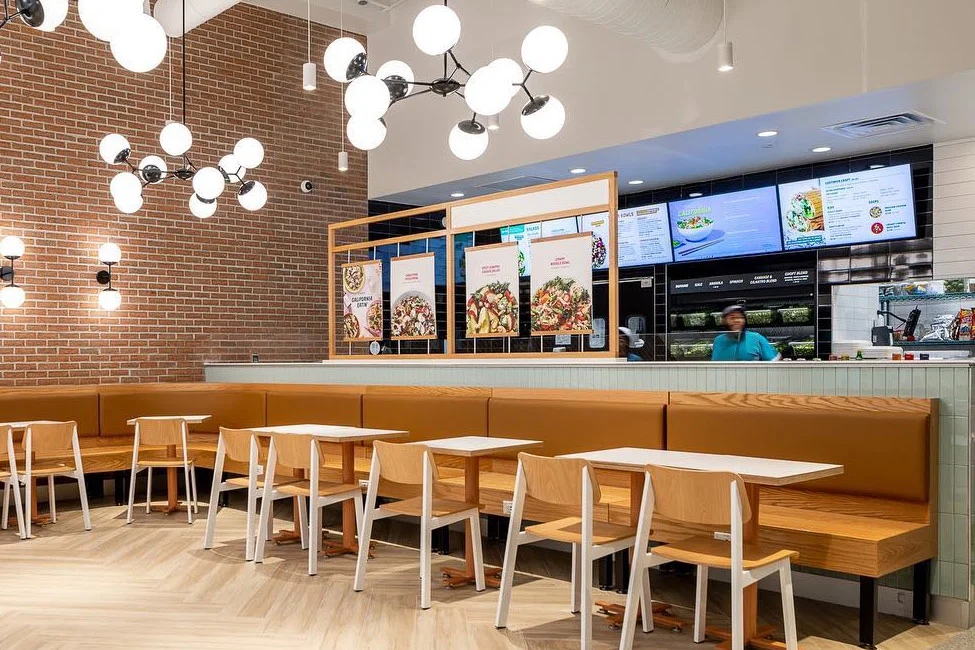
Chopt experienced the pitfalls of outdated signage first-hand. Early on, each store had its own setup, and updating menu content meant logging into local PCs. As the brand expanded, this approach became unwieldy.
By switching to TelemetryTV’s digital signage software along with the TelemetryOS Box, Chopt centralized all content in a single cloud-based dashboard, drastically reducing manual work. They also integrated real-time order information on screen, giving customers a transparent view of their orders. As a result, support tickets related to signage issues reportedly fell by 80 percent, and new store rollouts sped up significantly.
Where the Market Is Headed
Digital menu boards are increasingly tapping into artificial intelligence. Sophisticated integrations can change displayed items based on weather, demographics, or even current inventory levels. Drive-thru signage is also catching up, offering higher brightness and weatherproof designs to meet growing demands for outdoor digitization.
On the analytics front, deeper data from POS and third-party systems can help restaurant owners tailor promotions for maximum sales. And as consumer expectations rise, even smaller operators are moving toward cloud-based solutions to stay agile and maintain consistency.
Conclusion
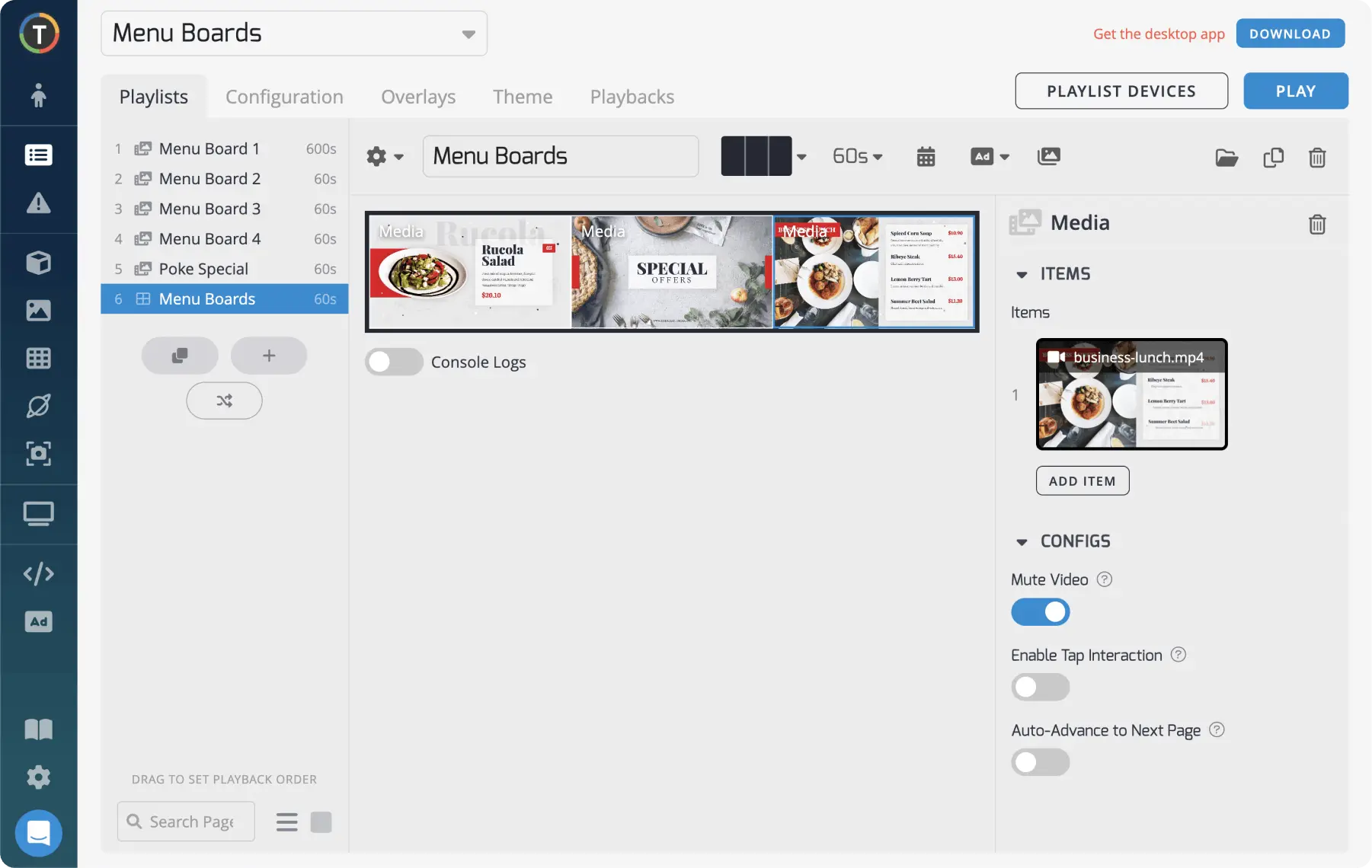
For multi-location quick-service or fast-casual brands, the right digital menu board software is far more than a tool for displaying items. It’s a platform for real-time updates, centralized control, powerful analytics, and hardware integration—all wrapped into a system that can scale with business growth.
TelemetryTV's digital signage software is one option that meets these criteria, offering a centralized management console, hardware integration, and an extensive library of design tools. As Chopt’s example illustrates, the payoff from centralizing control and improving reliability can be swift and significant.
Enhance Your Restaurant with Digital Signage Software
Upgrade your QSR or fast-casual menus with our leading digital signage software. Manage content, boost engagement, and refine your brand across every screen—no extra hassles.
Start for Free


